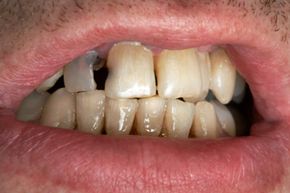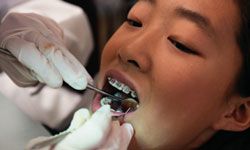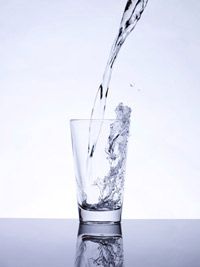If you've ever been to the dentist, you've encountered talk of fluoride. There's fluoride in your toothpaste, fluoride in your drinking water and dentists even offer fluoride treatments to make sure you're getting enough. It may even show up in your bottled water, depending on the source.
The general consensus is that we need it to help prevent tooth decay, a common yet preventable issue. In the early 1940s, scientists found that people who lived near sources of drinking water that contained natural levels of fluoride had fewer cavities. Upon this research, Grand Rapids, Mich., added fluoride to its water supply to get it in the mouths of the masses, and other states quickly followed. After the World Health Organization gave their thumbs up in 1969, many other countries got on board.
Advertisement
Between then and now, the subject of fluoride has become a quietly controversial topic. Scientists began looking for a link between fluoride intake and osteocarcomas, a very rare type of bone cancer. While no definitive link has been found between the two, a condition called dental fluorosis has been identified. Fluorosis is a permanent condition where teeth become discolored or mottled from ingesting too much fluoride. It's more commonly found in children, because it only happens during the years when teeth are being formed -- meaning no one over the age of 8 is susceptible.
The Centers for Disease Control and Prevention (CDC) says that 32 percent of children in America show some signs of dental fluorosis [source: Fluoride Action Network]. Fortunately, most cases are very mild and barely noticeable to the untrained eye. So, how do kids end up getting an excess of fluoride? While adults and older children need between 3 and 4 miligrams of fluoride a day, infants and young children only need between 0.5 and 1 mg [source: University of Florida]. In the U.S., most people get about 75 percent of their fluoride requirements from water and drinks made with water, like soda and fruit juice. So, if you add dental products, like toothpaste and mouthwashes to the equation, especially the tasty kind that kids like to swallow, it can lead to a fluoride overload.
Advertisement



